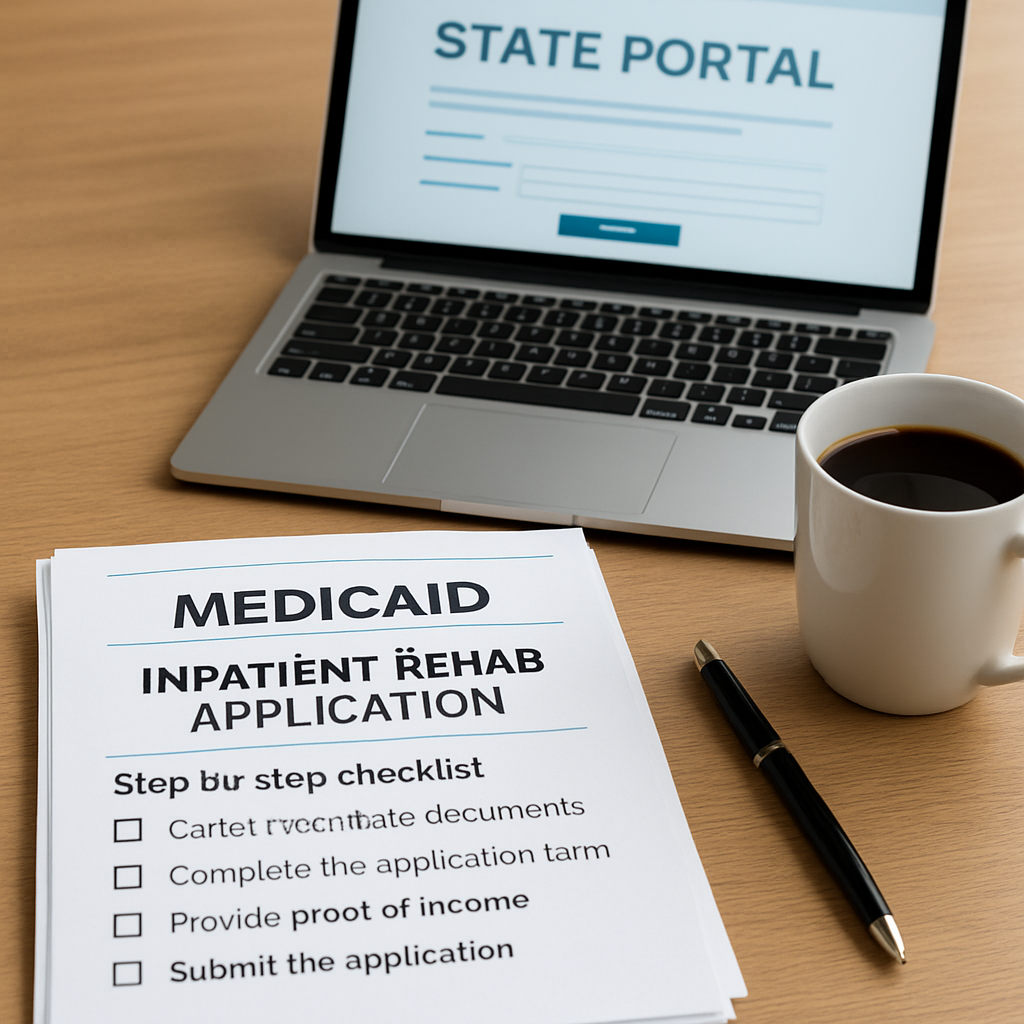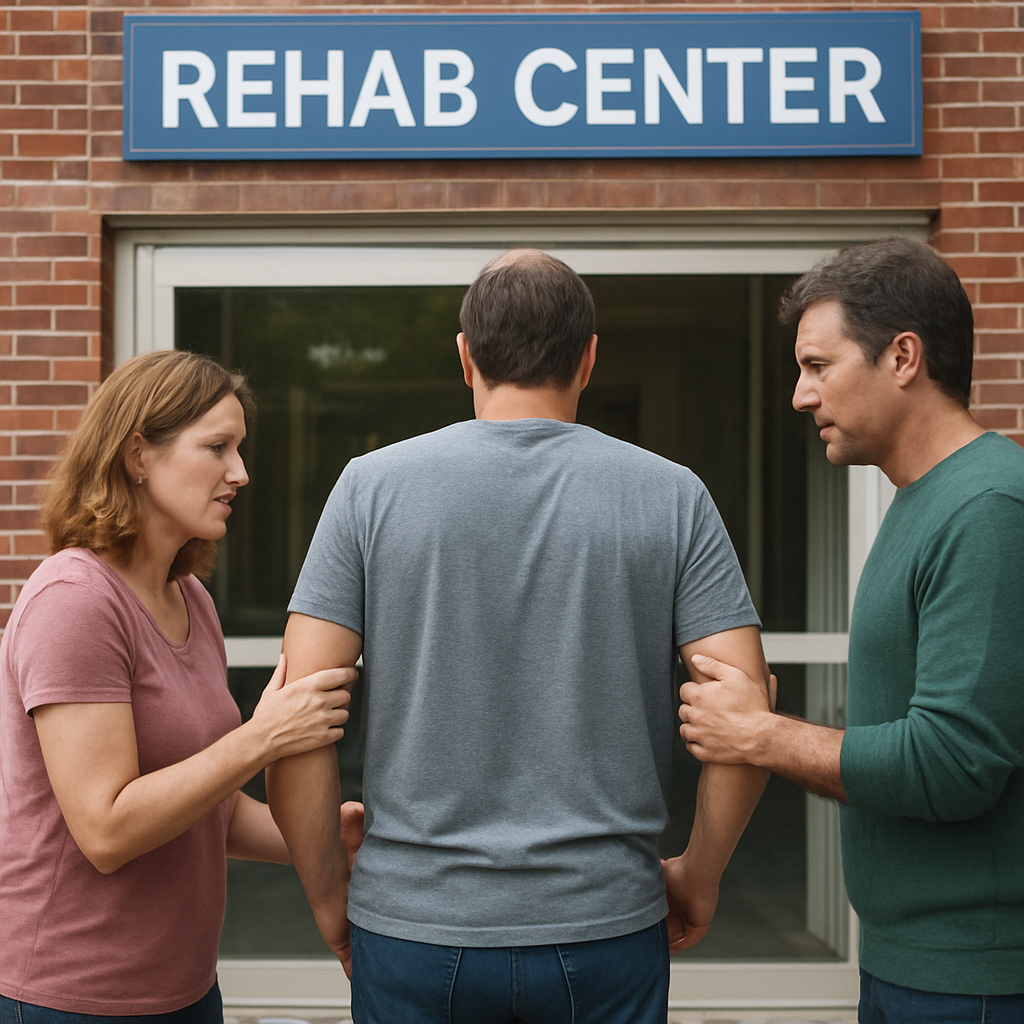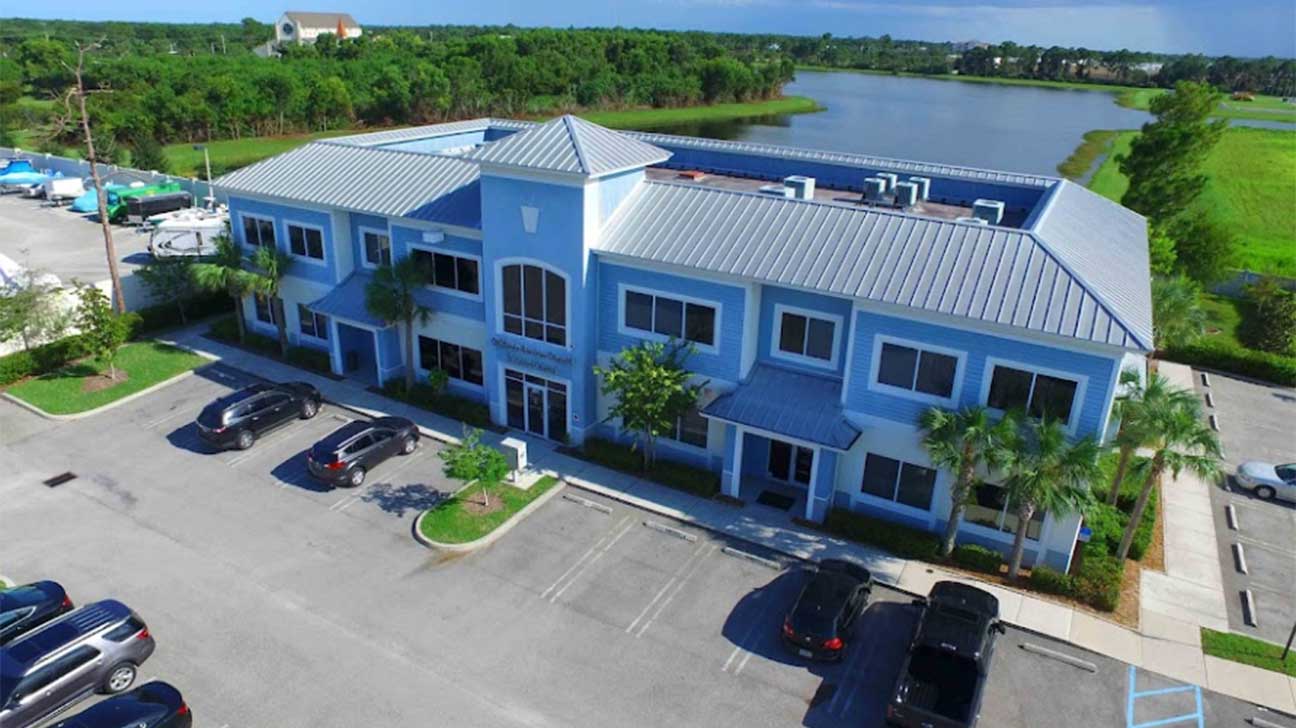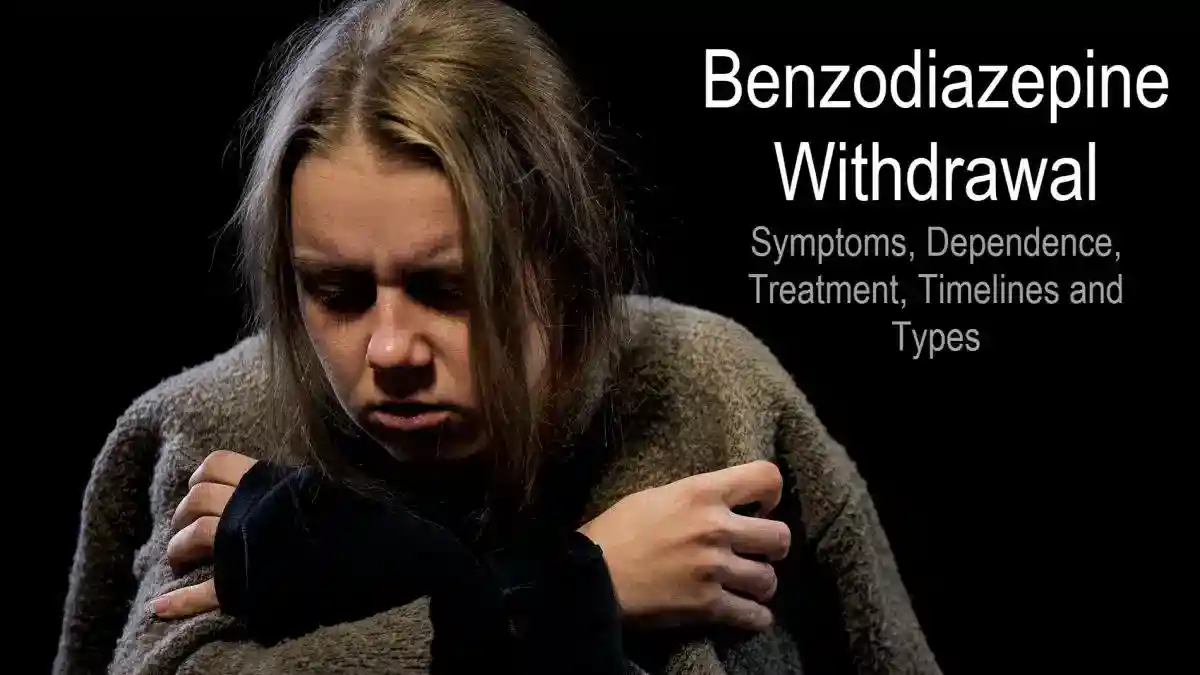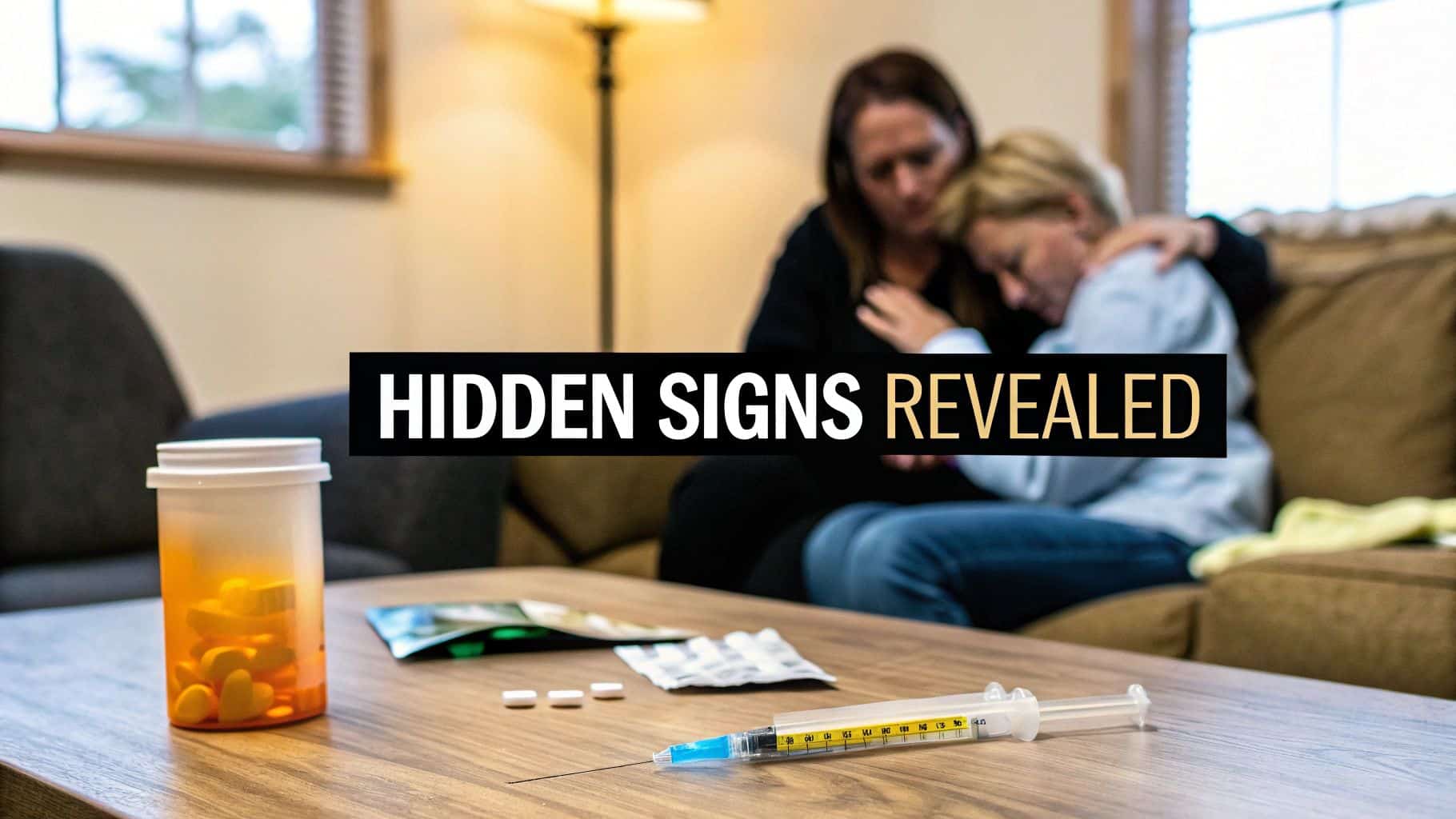
Recognizing What Others Miss: The Reality of Hidden Drug Use

It’s a tough reality to face, but often, drug use doesn’t happen in the shadows. It happens right in front of us, masked by believable excuses and the chaos of daily life. You might notice small, unusual behaviors from a friend or loved one—maybe they’re constantly exhausted or their moods are all over the place—but you explain it away. It’s natural to want to see the best in the people we care about, making it easy to ignore that gut feeling that something is wrong. This is one of the biggest psychological hurdles in how to tell if someone is using drugs: our own denial.
Our emotional bonds can create major blind spots. For example, when a college student’s grades suddenly plummet, we might chalk it up to academic stress instead of a developing substance problem. When a coworker is chronically late and irritable, we assume it’s just pressure at home. We look for explanations that are less scary because confronting the possibility of drug use is painful and feels incredibly complicated. The problem is, ignoring these early signs lets the issue grow, making it much harder to step in later on.
Why Your Gut Instincts Matter
One of the most important things you can do is trust your intuition. When something feels consistently “off” with someone, it probably is. That feeling is often your subconscious piecing together subtle clues that your conscious mind is trying to rationalize. The scale of this issue is massive. In 2021, an estimated 46.3 million people in the U.S. had a Substance Use Disorder, but a shocking only 6.3% received any kind of treatment. You can explore more data on substance use disorders from the National Institute on Drug Abuse. This treatment gap highlights just how crucial it is for friends and family to spot the signs early.
Facing the reality of hidden drug use means accepting that it can touch anyone, no matter their job, background, or personality. This isn’t about playing detective; it’s about being an observant and caring person in their life. Simply being aware and willing to see the truth can be the very thing that starts a life-changing conversation and helps guide someone toward the support they desperately need. Your awareness isn’t an accusation—it’s a lifeline.
Reading Between the Lines: Behavioral Changes That Actually Matter
When you’re worried a loved one might be using drugs, it’s easy to look for the dramatic, movie-like meltdowns. But the reality is often much quieter. The real behavioral shifts are subtle and can be easily explained away as just a bad mood, stress from work, or someone going through a rough patch. Learning how to tell if someone is using drugs isn’t about finding a single “gotcha” moment, but about noticing a pattern of small, out-of-character changes over time.
This infographic shows some of the isolating behaviors that often come with substance use.
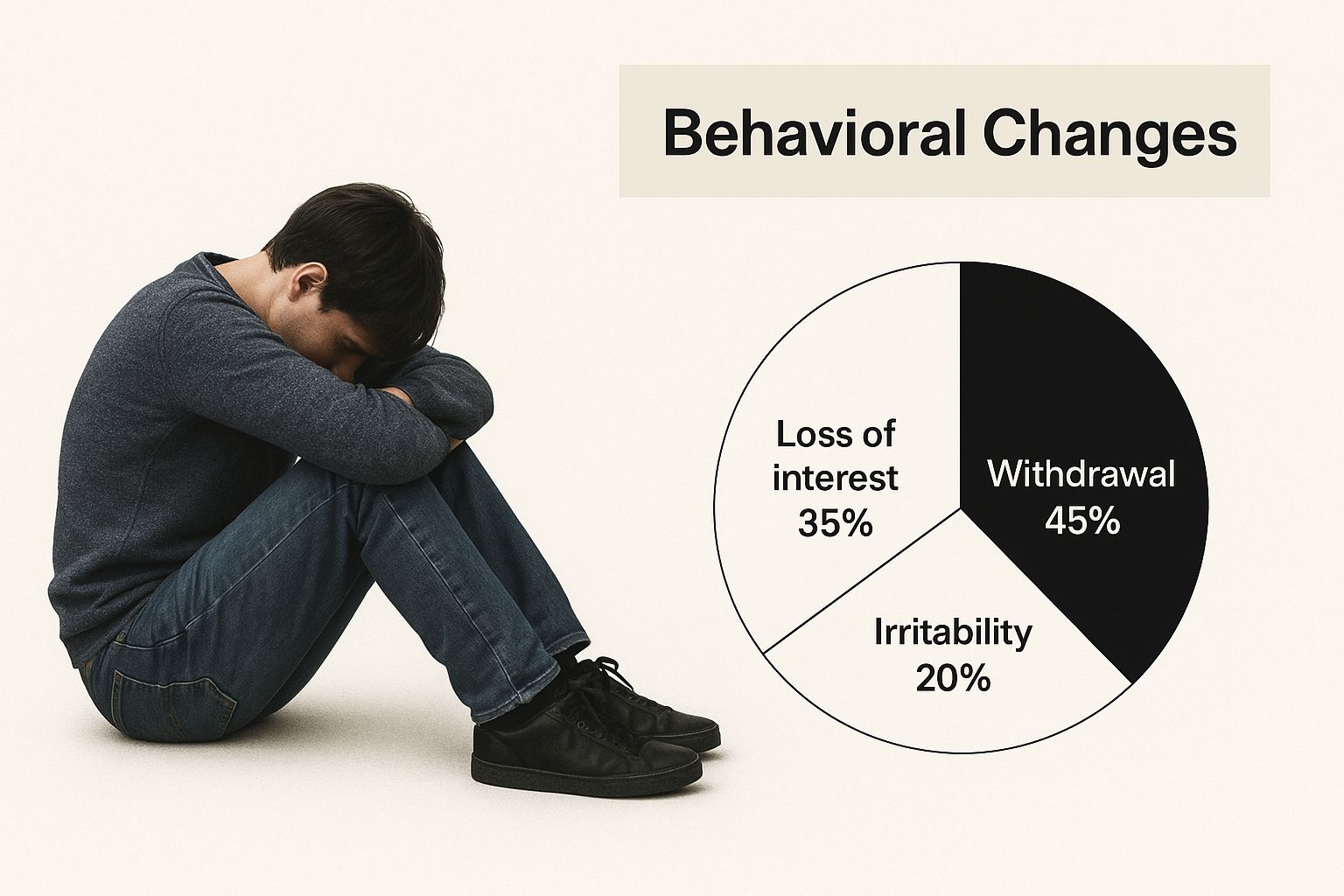
The image of a person withdrawn and hunched over really captures the emotional retreat that happens, pulling them away from the people and activities they once cherished.
Shifting Priorities and Responsibilities
One of the most telling signs is a slow but steady change in what they prioritize. Think about a coworker who was always on top of their game but now consistently shows up late, misses deadlines, or just seems spaced out in meetings. At home, you might see bills piling up or chores ignored by a partner or family member who was always responsible. These aren’t just isolated slip-ups; they show a deeper shift in where their focus and energy are truly going.
Another big clue is a change in their social life. If your friend suddenly ditches their long-time buddies for a new, unknown crowd and gets cagey about who they’re spending time with, pay attention. This often happens because the new friends are more accepting of—or even participate in—their substance use. It’s a way to dodge judgment and accountability from people who care about them.
To help you connect these behaviors to specific substances, we’ve put together a table that breaks down common behavioral changes by drug type.
Common Drug Types and Associated Behavioral Changes
A comprehensive comparison of how different substances affect behavior, helping you identify specific patterns related to various drug types
| Drug Type | Early Behavioral Signs | Advanced Behavioral Changes | Timeline |
|---|---|---|---|
| Stimulants (Cocaine, Amphetamines) | Increased energy, talkativeness, unusual excitement, decreased appetite. | Extreme mood swings, paranoia, aggression, periods of hyperactivity followed by crashes, isolation. | Effects are often short-lived (hours), leading to a cycle of binging and crashing. |
| Opioids (Heroin, Painkillers) | Drowsiness, “nodding off,” slowed breathing, social withdrawal, frequent flu-like symptoms. | Neglecting responsibilities, financial problems, secretive behavior, loss of interest in hobbies. | Signs can be constant as the user tries to avoid withdrawal, which starts within 6-12 hours. |
| Depressants (Benzodiazepines, Barbiturates) | Drowsiness, confusion, impaired coordination, slurred speech, memory problems. | Severe mood swings, irritability, risky behavior, inability to fulfill work or school obligations. | Behavior can appear similar to alcohol intoxication; long-term use leads to dependency and severe withdrawal. |
| Cannabis (Marijuana) | Giddiness, red eyes, increased appetite, slowed reaction time, poor short-term memory. | Lack of motivation, paranoia, anxiety, withdrawal from family and old friends. | While early signs may seem mild, long-term heavy use can significantly alter personality and priorities. |
This table shows how different drugs create distinct behavioral patterns. Noticing whether someone is constantly agitated versus consistently drowsy can offer clues about what might be going on.
Call Now – Your Journey to Recovery Begins Today!
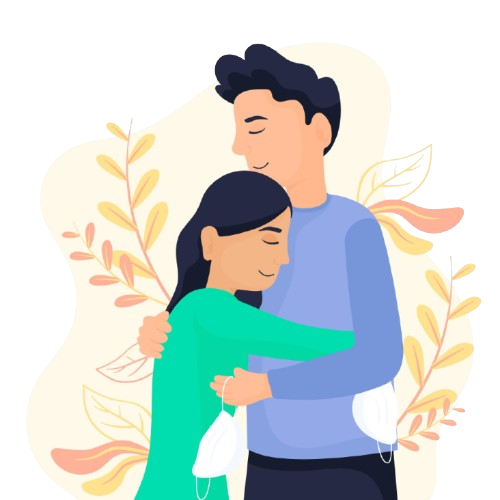
Take the first step towards a healthier life! Call now to connect with our compassionate team and start your recovery journey today. Your path to healing awaits!
Our recovery specialists are available 24/7 to provide support, and all calls are confidential and free. Reach out anytime – we’re here to help!
Emotional and Communicative Alterations
Beyond their actions, take note of changes in their emotional state and how they communicate. Are they suddenly defensive, irritable, or prone to wild mood swings? You might see someone fly off the handle over something small or, conversely, seem completely numb and disconnected during an important family talk. This isn’t just “being moody”; it’s a reflection of how substances can mess with the brain’s ability to regulate emotions.
You might also notice their communication becoming dishonest or evasive. They might lie about where they’ve been, how they’re spending money, or even how they feel. This secrecy is a defense mechanism designed to protect their drug use from discovery. Drug use is a massive public health issue, with global use affecting 292 million people in 2022—a 20% jump in only a decade. While cannabis is the most common, substances like opioids, amphetamines, and cocaine are widespread. You can read more about this global problem in a report from the UN Office on Drugs and Crime.
Spotting these patterns is vital, as they often show up before more serious consequences do. Many of these initial signs are similar to what you might see before a relapse, which you can learn more about in our guide on relapse warning signs.
What Your Eyes Can’t Ignore: Physical Warning Signs
While you can sometimes explain away shifts in behavior, certain physical changes are much harder to miss. These signs are often the most concrete clues you have when trying to figure out how to tell if someone is using drugs. Your eyes might be the first to notice that something is physically off, even if you can’t quite put your finger on it at first.
From Eyes to Hygiene: Obvious Physical Indicators
Some of the most well-known physical signs involve a person’s eyes. Depending on the substance they might be using, you could notice:
- Bloodshot or glassy eyes: This is a common indicator for substances like alcohol and marijuana.
- Constricted or “pinpoint” pupils: This is often a telltale sign of opioid use, which includes heroin and prescription painkillers.
- Dilated pupils: Stimulants such as cocaine or amphetamines can cause pupils to become unusually large.
Beyond their eyes, pay attention to sudden and unexplained changes in weight. Significant weight loss can happen with stimulant use because it tanks a person’s appetite, while other substances might lead to weight gain. You may also notice a decline in personal hygiene. Someone who was once meticulous about their appearance might start to look unkempt, wear dirty clothes, or neglect their dental health. Chronic substance use can lead to severe tooth decay, sometimes called “meth mouth,” and can also cause skin problems like sores or abscesses, particularly from injection drug use.
Spotting the Tools of the Trade: Drug Paraphernalia
Finding unfamiliar objects can be a major red flag. These items, known as drug paraphernalia, are the tools someone might use to take drugs.
The image below from Wikipedia shows a collection of common drug paraphernalia.
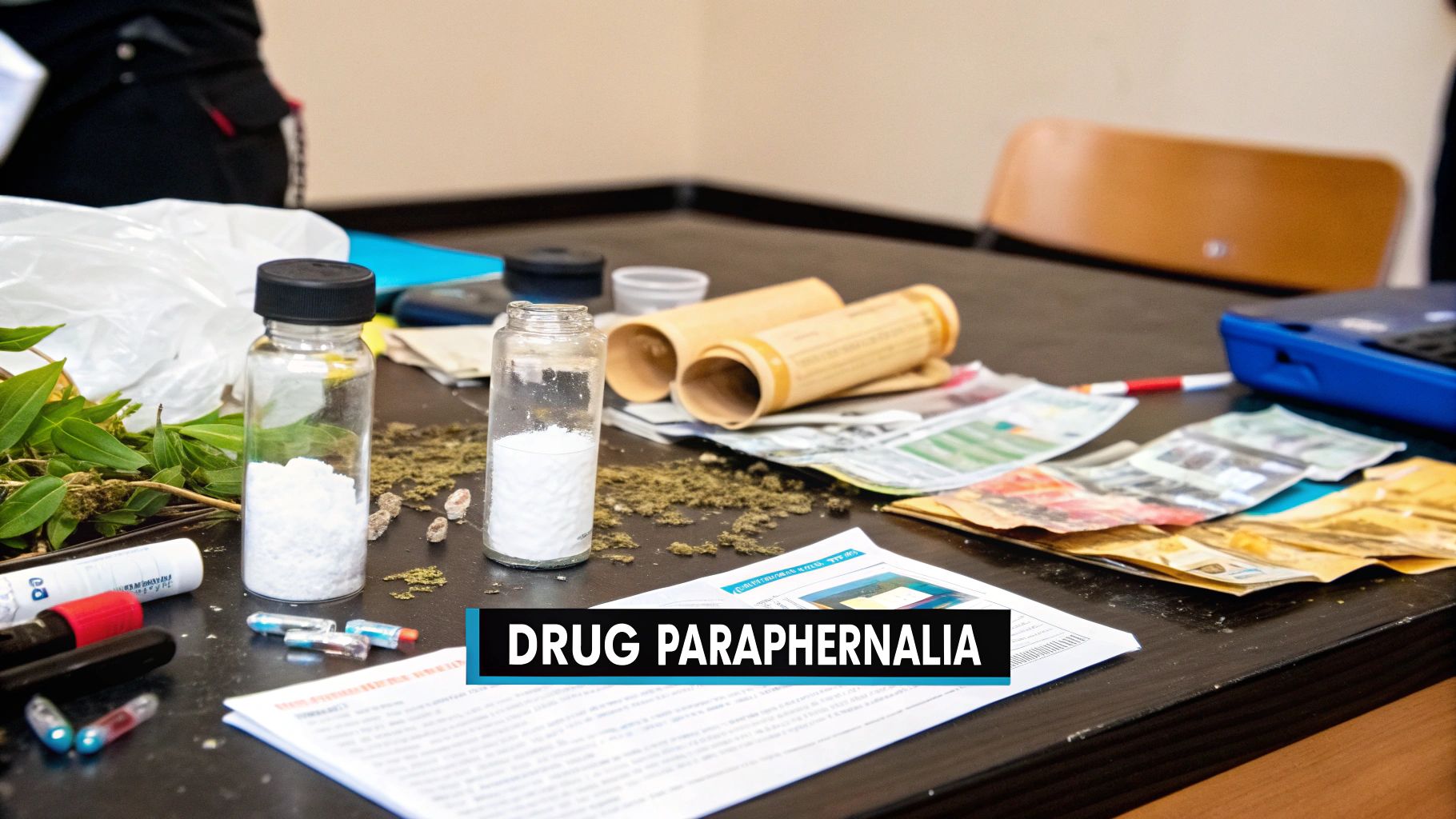
Recognizing items like pipes, rolling papers, small baggies, syringes, or burnt spoons can provide tangible evidence that drug use might be happening.
If you find things like this, it’s important not to jump to conclusions immediately. Instead, view them as one piece of a larger, concerning pattern. The presence of paraphernalia, combined with the physical and behavioral changes you’ve noticed, helps paint a more complete picture. Observing these signs requires you to be alert but not invasive. It’s about paying close attention to what’s happening right in front of you. These physical clues are your prompt to look deeper and start thinking about what to do next.
Environmental Detective Work: Reading Living Space Changes
Sometimes, the most telling clues about potential substance use aren’t in what someone says or does, but in the spaces they live in. A person’s environment—whether it’s their bedroom, car, or even their workspace—can tell a story they might be trying to keep hidden. Learning how to tell if someone is using drugs often means becoming a quiet observer of these personal spaces.
You’re not on the hunt for a single misplaced item, but rather a pattern of unusual shifts. For instance, if a room that was always neat is now constantly messy and carries a strange sweet, smoky, or chemical odor, that’s a significant flag. This isn’t just about becoming lazy; it can signal a major change in priorities and could be an attempt to cover up smells from substances like marijuana or various synthetic drugs.
What to Look For in Their Personal Space
The evidence you might notice can range from the very obvious to the carefully concealed. The key is to look for changes that don’t align with the person’s typical habits. This is about being observant while still respecting their privacy—you don’t have to go through their drawers to notice what’s sitting in plain sight.
Here are some specific environmental red flags to be aware of:
- Unusual Odors: Pay attention to lingering smells that just seem off. This could be a persistent chemical scent, the heavy use of incense to mask other odors, or the distinct skunk-like smell of cannabis.
- Hidden Paraphernalia: Finding strange items can be really unsettling. Be aware of objects like burnt spoons or bottle caps, syringes, small glass pipes, or cut-up straws. These are often hidden in discreet spots, such as inside hollowed-out books, tucked behind posters, or stored in everyday containers like mint tins.
- Financial Clues: You might come across pawn shop receipts for personal items that have been sold, or a stack of unopened, unpaid bills. These can suggest that money is being funneled elsewhere, possibly to support a drug habit.
- Changes in Cleanliness: Notice a sudden and dramatic decline in the tidiness of their room or car. This could look like trash piling up, heaps of unwashed clothes, or a general state of disarray that is completely out of character for them.
Spotting these environmental signs gives you tangible information that is often harder for someone to deny or explain away than shifts in their behavior. Think of each sign as a piece of a bigger puzzle. When you combine these observations with physical and behavioral changes, you start to form a clearer picture of what might really be going on. This understanding is the essential first step toward figuring out how to approach them with care and genuine concern.
Context Matters: Regional Patterns and Risk Factors
Figuring out if someone is struggling with substance use isn’t just about looking for a checklist of behaviors. The world they live in—their neighborhood, their friends, their daily pressures—plays a huge role. Learning how to tell if someone is using drugs means you have to zoom out and consider the bigger picture. Location and community can heavily influence what signs you might see and what they could mean.
For instance, someone living in a rural town with few job prospects and not much to do faces different challenges and might have access to different substances than a person in a big city. Things like the local availability of certain drugs, how law enforcement handles substance use, and even cultural views all shape the situation. This context is key to making a fair observation instead of jumping to conclusions.
Age and Socioeconomic Influences
Personal details like age and financial situation are also significant factors. A teenager dealing with peer pressure at school will show very different warning signs than a high-powered executive using substances to cope with job stress. Likewise, financial strain or living in a neighborhood where drug use is common can increase a person’s vulnerability.
To get a clearer picture of how much location matters, it helps to look at some data. The prevalence and types of substances used can vary dramatically from one place to another.
Regional Drug Use Statistics and Common Substances
Statistical breakdown of drug use prevalence and most common substances by region to help contextualize local warning signs
| Region | Prevalence Rate | Most Common Substances | Key Risk Factors |
|---|---|---|---|
| United States | 6% of the population uses illegal drugs | Opioids (especially fentanyl), Methamphetamine, Cannabis | High-pressure work environments, economic disparity, high availability of prescription opioids. |
| Western Europe | Varies; approx. 5.1% use cannabis | Cannabis, Cocaine, MDMA (Ecstasy) | Urban nightlife culture, social pressures, established trafficking routes. |
| Eastern Europe | High rates of injection drug use | Heroin, Synthetic stimulants (e.g., “Krokodil” in the past) | Economic instability, limited access to treatment, legacy of Soviet-era social issues. |
| Southeast Asia | High; varies by country | Methamphetamine (“Yaba”), Heroin, Ketamine | Proximity to the Golden Triangle (major production area), poverty, rapid urbanization. |
| Greenland | 1,630 drug use disorders per 100,000 people | Alcohol, Cannabis, hash oil | Social isolation, limited economic opportunities, cultural disruption. |
| San Marino | 251 drug use disorders per 100,000 people | Cannabis, Cocaine | Affluence, proximity to major European party destinations. |
Data compiled from various sources including the World Population Review and national health surveys.
This table shows just how different the landscape can be. For example, while the U.S. has a prevalence rate of around 6%, some places like Greenland have a much higher rate of documented substance use disorders. You can dive deeper into these global differences by checking out country-specific drug use data.
Understanding these regional and personal factors gives you a critical backdrop for what you’re observing. It helps you put the pieces together more accurately and recognize when someone’s circumstances might be putting them at greater risk. This insight allows you to approach the situation with more empathy and a better understanding of what they might be going through.
Call Now – Your Journey to Recovery Begins Today!

Take the first step towards a healthier life! Call now to connect with our compassionate team and start your recovery journey today. Your path to healing awaits!
Our recovery specialists are available 24/7 to provide support, and all calls are confidential and free. Reach out anytime – we’re here to help!
The Conversation That Changes Everything: Approaching With Care
Knowing the signs of drug use is one thing, but figuring out what to do next is often the most daunting part. How do you start that conversation? It’s a moment that feels heavy with consequence, but if you approach it with care, compassion, and a plan, you can make a real difference. The goal isn’t to start a fight or make accusations; it’s to open a door for an honest talk.
Timing and setting are everything. Don’t try to have this talk during a high-stress moment or in the middle of an argument. That’s a recipe for disaster. Instead, find a quiet, private time when you can both speak freely without being rushed or overheard.
The words you choose are your most powerful tool. Using “I” statements is a classic but effective way to share your concerns without putting the other person on the defensive. For example, instead of saying, “You’re acting so strange, you must be on drugs,” you could try, “I’ve been feeling worried about you lately. I’ve noticed you seem really distant and tired, and I just want to make sure you’re okay.” This small change shifts the focus from blame to genuine care for their well-being.
Preparing for a Difficult Dialogue
Before you even sit down to talk, prepare yourself mentally. It’s important to remember that denial is a powerful and common defense mechanism tied to substance use. Be ready for them to deny everything, get angry, or even try to flip the script and blame you. Your role is to remain calm and stay focused on your love and concern for them.
Here are a few practical tips to help you navigate this tough conversation:
- Be Specific, Not General: Vague accusations are easy to dismiss. Instead of saying, “You’ve been so irresponsible,” point to a concrete example. Try something like, “I was concerned when you missed our family dinner last week without calling, which isn’t like you.”
- Offer Support, Not Solutions: Resist the urge to dictate what they must do. The goal is to empower them, not control them. You could say, “I’m here for you, and if you’re open to it, we can look for some resources together.”
- Set Boundaries: This is crucial. You need to express that while your love is unconditional, you cannot support or enable behavior that is destructive. This might mean saying you will no longer provide money or make excuses for them if they miss work or other commitments.
Your relationship is the foundation, so try to preserve it even if the conversation doesn’t go the way you hoped. Remind them that you’re coming from a place of love and that your only motive is their health and safety. The first conversation might not solve everything, but it plants a seed.
If you feel out of your depth, that’s completely normal. You can find strategies for helping a loved one at Addiction Helpline America. Sometimes, bringing in a professional is the best next step. An intervention specialist can help structure these critical conversations and improve the chances of a positive outcome, especially if the person’s substance use is putting them or others at risk.
Call Now – Your Journey to Recovery Begins Today!

Take the first step towards a healthier life! Call now to connect with our compassionate team and start your recovery journey today. Your path to healing awaits!
Our recovery specialists are available 24/7 to provide support, and all calls are confidential and free. Reach out anytime – we’re here to help!
Moving Forward: Your Action Plan When Concerns Are Confirmed
Discovering for certain that someone you love is using drugs can feel like the ground has disappeared from under you. The initial shock often melts away into one overwhelming question: “What do I do now?” It’s completely normal to feel frozen by fear and uncertainty, but mapping out a few next steps can make a world of difference. Your goal is to pave a way forward that is built on safety, support, and a real chance at recovery—for them and for you. This isn’t about having all the answers at once, but about taking the first meaningful, constructive steps.
Immediate Safety and Support
Before you even start thinking about long-term treatment, you have to address any immediate dangers. If the person is a risk to themselves or others, or if you think a medical emergency like an overdose is possible, you need to act immediately. This could mean calling 911 or getting them to emergency medical care without a second thought. Their safety is the absolute, non-negotiable priority.
Once any immediate crisis is handled, your focus can shift to research and building a solid foundation of support. This is where you transition from a worried observer to a proactive advocate. Helping someone through recovery is a long journey, not a quick fix, and you can’t do it all on your own. The importance of support systems is well-established; having a network of allies is crucial for both the person struggling and for you. To better understand this, you can explore the vital role these networks play in our article on the importance of support systems in recovery.
Building a Practical Action Plan
Finding a path to recovery isn’t just about picking “a rehab.” It’s about finding the right kind of help for their specific situation. Here’s how you can begin to organize your efforts in a way that feels less overwhelming:
- Research Legitimate Treatment Options: Start looking into the different types of care available. This could be medical detox, an inpatient residential program, or outpatient services. The best fit will depend on the substance they’re using and how deep the addiction goes.
- Understand Financial and Insurance Realities: Get in touch with their insurance provider to find out what their plan covers. This can be a confusing maze, but many treatment facilities have dedicated admissions coordinators who can help you figure it out.
- Set Healthy Boundaries: This is one of the toughest but most important parts of this process. You need to decide what you are and are not willing to do. For instance, you might offer to drive them to support group meetings but refuse to give them money that could be used for drugs. These boundaries protect your own mental and emotional health and stop you from unintentionally enabling their use.
- Manage Your Expectations: Recovery is almost never a straight line. Setbacks and even relapse can be part of the journey. Prepare yourself for bumps in the road and try to focus on the overall progress, not on achieving perfection.
This process is emotionally draining. You are standing by someone through one of the biggest fights of their life, and it’s essential that you don’t lose yourself along the way.
If you’re feeling swamped and unsure about what to do next, please know you are not alone. Addiction Helpline America is available 24/7 to offer confidential guidance and connect you with the resources you need. Call us today to find the right path forward.
Our helpline is 100%
free & confidential
If you or someone you care about is struggling with drug or alcohol addiction, we can help you explore your recovery options. Don’t face this challenge alone—seek support from us.
Programs
Resources
Will my insurance
cover addiction
treatment?
We're ready to help
Find the best
drug or alcohol treatment
center
Are you or a loved one struggling with addiction? Call today to speak to a treatment expert.




